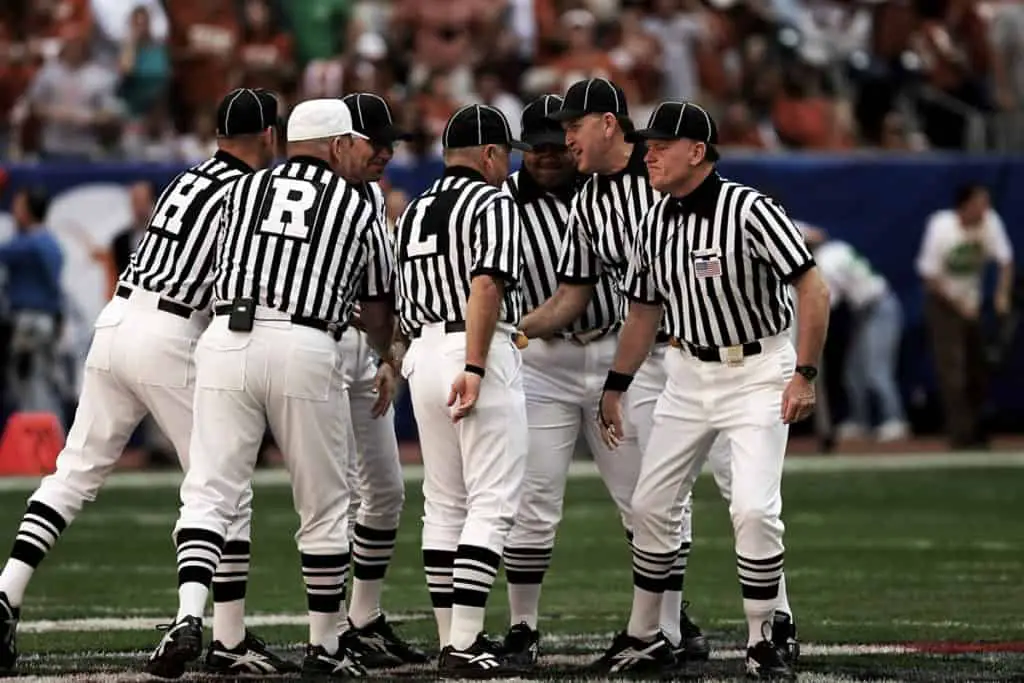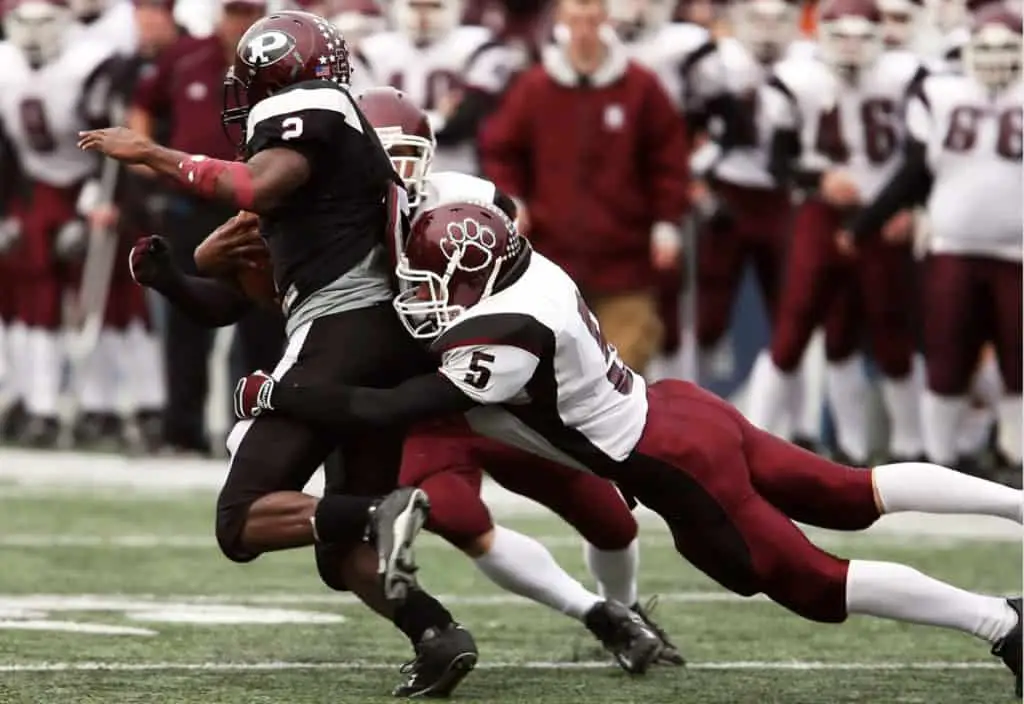Every sport has its unique way of handling possessions after halftime.
Even in football and basketball it can vary from level to level. Ultimately, the rules are set up to try to provide an evenly matched competition and to ensure nobody gains a major competitive advantage.
Who gets the ball after halftime?
It will vary from sport to sport and from level to level. Typically in football, the team that kicked off in the first half will receive the ball to start the 2nd half. In basketball, it varies by level as jump balls and the possession arrow impact who gets the ball.
Below, we will dive deeper into the following questions related to this topic:
- Who gets the ball after halftime in football
- Who gets the ball after halftime in the NBA
- Who gets the ball after halftime in college basketball
- Who gets the ball after halftime in high school basketball
- Who gets the ball after halftime in soccer

Who gets the ball after halftime in football?
At all levels there is a coin toss to start the game. The team that wins the toss gets the opportunity to decide if they want to receive the kickoff, or pick the side of the field they want to defend. Or they can defer their decision to the 2nd half. Generally speaking, the team that kicks off to start the game will typically get the ball after halftime.
As a result, both teams will get a decision they have to make. Their decision will either come at the start of the 1st half or the start of the 2nd half.
For example, if teams A wins the coin toss, they get two options:
- Take the choice for the first half (Possession or Side of Field to Defend)
- Defer their choice to the 2nd half (Possession or Side of Field to Defend)
As a result, the team that receives the ball to start the game, will typically kick off and the other team will receive the ball to start the 2nd half.
This holds true in many situations unless there is a major wind factor in the game and the team with the choice for the 2nd half prefers to have the wind to their back in the 4th quarter. They might actually choose to defend a certain direction vs taking the ball to start the half.
There is a strategy in taking the choice in the first half or deferring to the second half. Some teams prefer to kickoff to start the game in order to receive the ball to start the 2nd half.
Teams that prefer to kickoff and take possession to start the 3rd quarter after halftime, use the strategy of trying to score late in the 2nd quarter and then receive the kickoff to start the 2nd half. This gives them two consecutive possessions and the game can swing quickly if the team can put up 14 straight points without having to play any defense.
The other thinking is that it is easier to play defense to start a football game because of the pure emotion and energy on display to start a game. By the time the 3rd quarter rolls around, the coaches have a better idea of what the defense is trying to do and can make adjustments to start the 3rd quarter offensively.
Why do football players have towels?
Who gets the ball after halftime in the NBA?
The teams that lost the jump ball to start the game, will receive the ball at the beginning of the 2nd and 3rd quarters. The team that won the jump ball will receive the ball at the start of the 4th quarter.
The NBA does not have a possession arrow like many other levels of basketball. Anytime there is a jump ball called, they actually have a jump ball. This allows them to pre-set who will be getting the ball at the beginning of every quarter.
There are many possessions in basketball and who gets the ball at the beginning of each quarter does not have a major impact on the overall outcome of the game due to the many possessions. Football has less possessions and there is more value in receive the ball after halftime.
How many basketball games in a season?
Who gets the ball after halftime in college basketball?
The team that has possession according to the possession arrow. Every time there is a jump ball in college basketball, the team with the possession arrow receives the ball. This goes back and forth throughout the half. The team who has the possession arrow at the end of the 2nd quarter will receive the ball after halftime.
The college game is high tension in your face defense on most nights. This results in many jump balls with the possession arrow going back and forth.
Who receives the ball to start the 4th quarter will follow the possession arrow as well. Due to the many possessions involved in a basketball game, the possession to start a quarter does not have a major impact on the outcome of the game.
How long is a basketball game?
Who gets the ball after halftime in high school basketball?
The team that has possession according to the possession arrow. Every time there is a jump ball in high school basketball, the team with the possession arrow receives the ball. This goes back and forth throughout the half. The team who has the possession arrow at the end of the 2nd quarter will receive the ball after halftime.
This same rule applies to college basketball, high school basketball, youth/travel basketball and AAU. The only level of basketball without a possession arrow is the professional level.
Who gets the ball after halftime in soccer?
The team that did not get the ball to start the game will kickoff to start the 2nd half. Due to the many different possessions in a soccer match, the kickoff in soccer and who starts the 2nd half does not have a major outcome on the game.
In soccer, time of possession and the ability to control the ball is vital, but there are many opportunities possess the ball and attack on the offensive.
Can football games end in a tie?

Final Thoughts
In football, every possession matters and can make a difference in the outcome of the game. In basketball, there are so many possessions having the ball to start the game after halftime does not carry the same significance.
Every coach and team tries to avoid turnovers in both games as it leads to major swings in the game and it is difficult to win a game if you lose the turnover battle.
Both games are played with major energy for the length of the game and emotions run high. Both sports have a halftime where teams are able to make in game adjustments and get ready for the start of the 2nd half.
